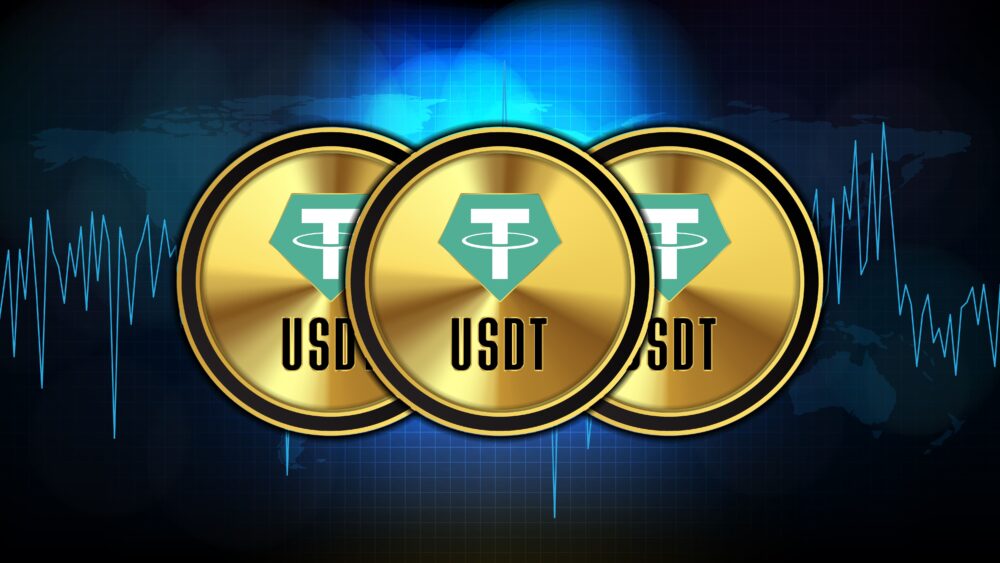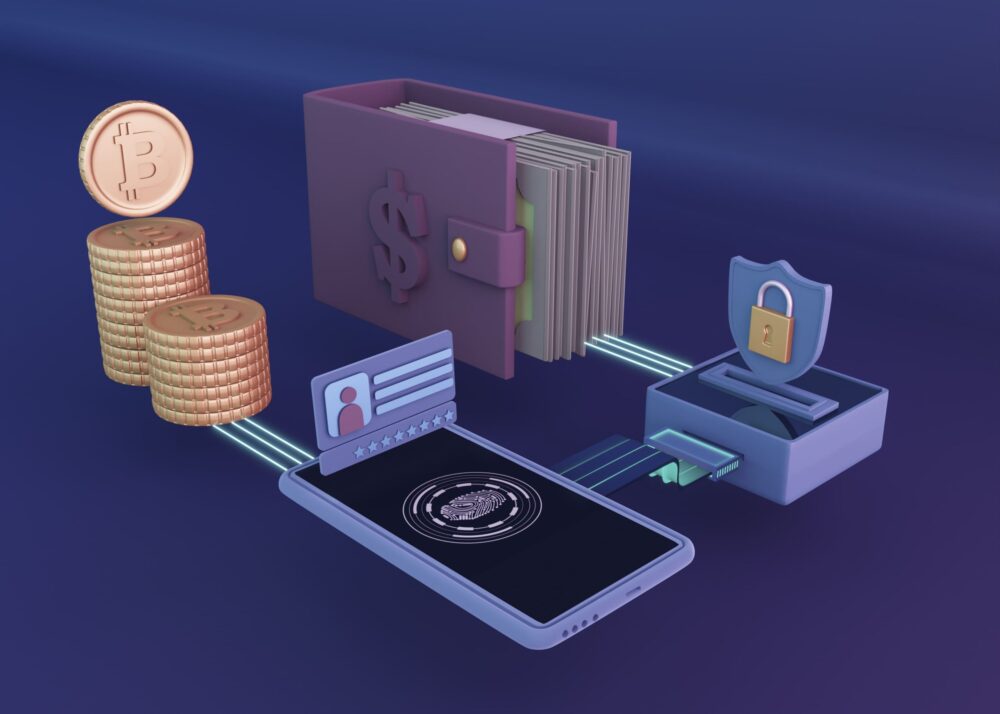Understanding the Role of Stablecoins in the Crypto Market
In this blog, we will explore stablecoins‘ role in the crypto market, understanding their concept, growing acceptance, and potential impact on financial inclusion. These unique digital assets aim to provide stability by being pegged to traditional assets. Stablecoins bridge the gap between crypto and traditional finance, aiding the unbanked and enabling seamless cross-border transactions. However, their rising adoption raises questions about the broader financial system’s future. We delve into the risks and regulatory challenges surrounding stablecoins, using a case study of the fall of TerraUSD. Navigating this landscape with awareness empowers users to harness stablecoins’ potential while being mindful of associated risks.
The Bridge Between Fiat and Crypto Amidst Crypto Volatility
Stablecoins, a unique category within the broader spectrum of cryptocurrencies, are designed to combat one of the most significant barriers to the widespread adoption of digital currencies – volatility. Unlike their more well-known counterparts, such as Bitcoin or Ethereum, which are notorious for their wild value fluctuations driven by market dynamics, stablecoins maintain a steady value. This stability is achieved by pegging their value to a reserve of stable assets, which could be a fiat currency like the US dollar, a commodity like gold, or even another cryptocurrency.
The primary objective of stablecoins is to offer the advantages of cryptocurrencies, such as security, privacy, and the speed of blockchain-based transactions, without the inherent volatility that typically characterizes them. This stability makes them an ideal instrument for a variety of applications. They can serve as a store of value, providing a safe place to hold assets in a volatile market. They can function as a medium of exchange, facilitating transactions with the speed and efficiency of digital currencies but without the risk of value loss. They can also act as a unit of account, offering a consistent measure of value in the world of digital assets.
Stablecoins could be used to:
- Provide a safe and accessible way to store value. Stablecoins could be used by people who do not have access to traditional banking services to store their money safely and securely. This would help to reduce financial exclusion and give people more control over their finances.
- Enable peer-to-peer payments. Stablecoins could be used to make peer-to-peer payments quickly and easily. This would be especially beneficial for people who live in rural areas or who do not have access to traditional banking services.
- Access financial services. Stablecoins could be used to access financial services, such as loans and investments. This would help people to improve their financial situation and build their wealth.
In addition to these benefits, stablecoins could also help to promote the digitization of financial transactions. By making it easier and more convenient to make payments, stablecoins could help to reduce the use of cash and encourage the use of digital payments. This would have a number of benefits, such as reducing the cost of transactions, increasing efficiency, and improving security.
In the burgeoning crypto market, stablecoins are gaining traction. Despite the regulatory uncertainties surrounding cryptocurrencies, the adoption of stablecoins is on the rise. The reason for this growing acceptance lies in the unique features that stablecoins offer.
The Potential Impact on Financial Evolution and Inclusion
Stablecoins could play a pivotal role in shaping the global financial future. By accelerating the digitization of financial transactions, they could make transactions faster, cheaper, and more transparent. They could also contribute to financial inclusion by providing access to financial services for the unbanked or underbanked population.

Overall, stablecoins have the potential to play a significant role in achieving financial inclusion and the digitization of financial transactions globally. By providing a safe, accessible, and convenient way to store value and make payments, stablecoins could help to improve the lives of millions of people.
Here are some specific examples of how stablecoins could be used to achieve financial inclusion and the digitization of financial transactions globally:
- Provide micro-loans to small businesses. This would help to boost economic activity and create jobs.
- Pay for goods and services online. This would make it easier for people to shop online and access a wider range of products and services.
- Send remittances to family members in other countries. This would be cheaper and more convenient than traditional methods of sending remittances.
Stablecoins have the potential to be a powerful tool for financial inclusion and the digitization of financial transactions. However, it is important to note that stablecoins are still a new technology, and there are risks associated with their use. It is important to do your research before using stablecoins, and to only use them with reputable providers.
The Flip Side of Stablecoins
Despite their potential, stablecoins come with their own set of challenges. Regulatory uncertainties, primarily due to the unclear legal status of stablecoins pose a significant hurdle. Additionally, the evolving nature of the nascent blockchain technology that underpins stablecoins presents technological risks. While stablecoins are designed to maintain a steady value, they are not entirely immune to volatility. Factors such as market dynamics, regulatory changes, and fluctuations in the underlying assets can influence their stability. Therefore, a comprehensive understanding of these risks is crucial for anyone venturing into the world of stablecoins.
Here are some of the risks associated with stablecoins:
- Market volatility: Stablecoins are designed to be pegged to a fiat currency, such as the US dollar. However, the value of stablecoins can still fluctuate, albeit to a lesser extent than the value of other cryptocurrencies.
- Fraud: There have been cases of fraud involving stablecoins. It is important to only use stablecoins with reputable providers.
- Regulatory uncertainty: The regulatory status of stablecoins is still uncertain in many jurisdictions. This could pose a risk to investors.
A Case Study on the Fall of TerraUSD Stablecoin
TerraUSD (UST) is a stablecoin, which means it is designed to be pegged to the US dollar. However, on May 9, 2022, UST lost its peg and began to trade below $1. The collapse of UST had a significant impact on the cryptocurrency market, and it also raised questions about the stability of stablecoins in general.
The collapse of UST wiped out over $40 billion in value and the price of LUNA, the sister token to UST, also crashed, losing over 99% of its value. The TerraUSD Stablecoin crash is one of the biggest financial collapses in the history of cryptocurrency.
Here is a more detailed view of the causes of the collapse of TerraUSD:
- The sell-off of LUNA was one of the causes for the collapse of TerraUSD. LUNA is the sister token to UST, and it is used to maintain the peg of UST to the US dollar. When investors began to sell off LUNA, it caused the price of LUNA to fall, which in turn led to the price of UST falling below $1.
- The Anchor Protocol withdrawal: Anchor Protocol is a lending platform that offered high interest rates on TerraUSD deposits. This made it attractive for investors to deposit their money in Anchor Protocol, which in turn increased the demand for UST. However, when investors began to withdraw their money from Anchor Protocol, it caused the demand for UST to decrease, which led to the price of UST falling below $1.
- The decline in the price of Bitcoin: Bitcoin is often seen as a bellwether for the cryptocurrency market. When the price of Bitcoin fell, it caused investors to sell off other cryptocurrencies, including TerraUSD. This sell-off put downward pressure on the price of UST, which led to it falling below $1.
- Concerns about the stability of the TerraUSD system: The TerraUSD system is based on a complex system of incentives and penalties. This system was designed to keep the price of UST pegged to $1. However, when there was a large sell-off of UST tokens, the system proved to be unstable and the price of UST fell below $1.








